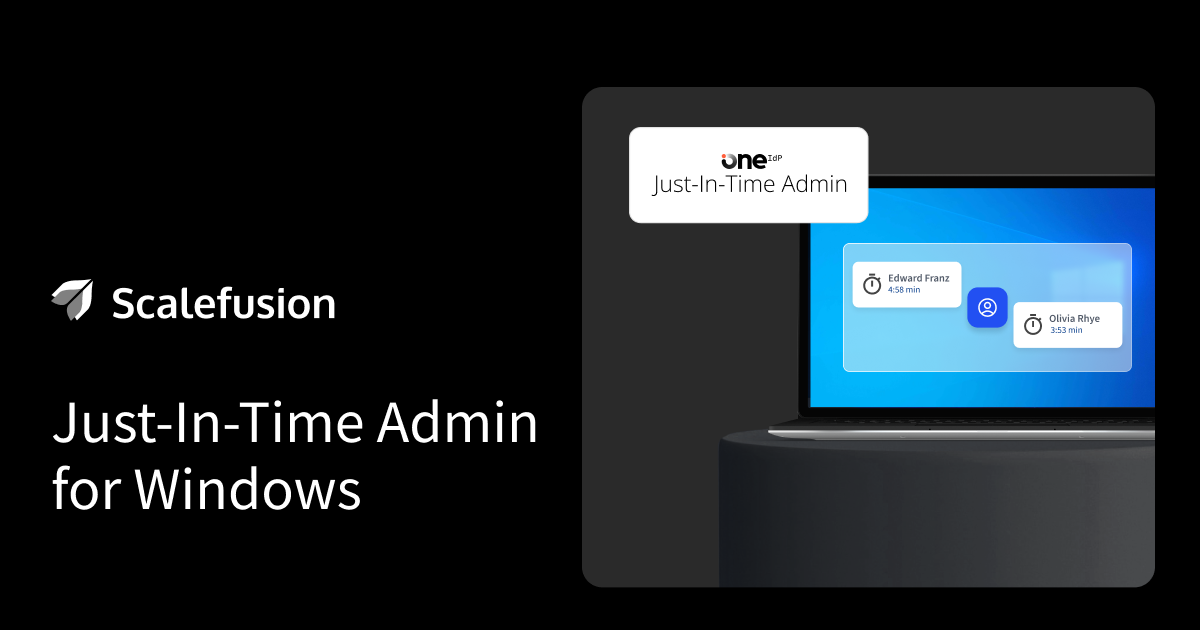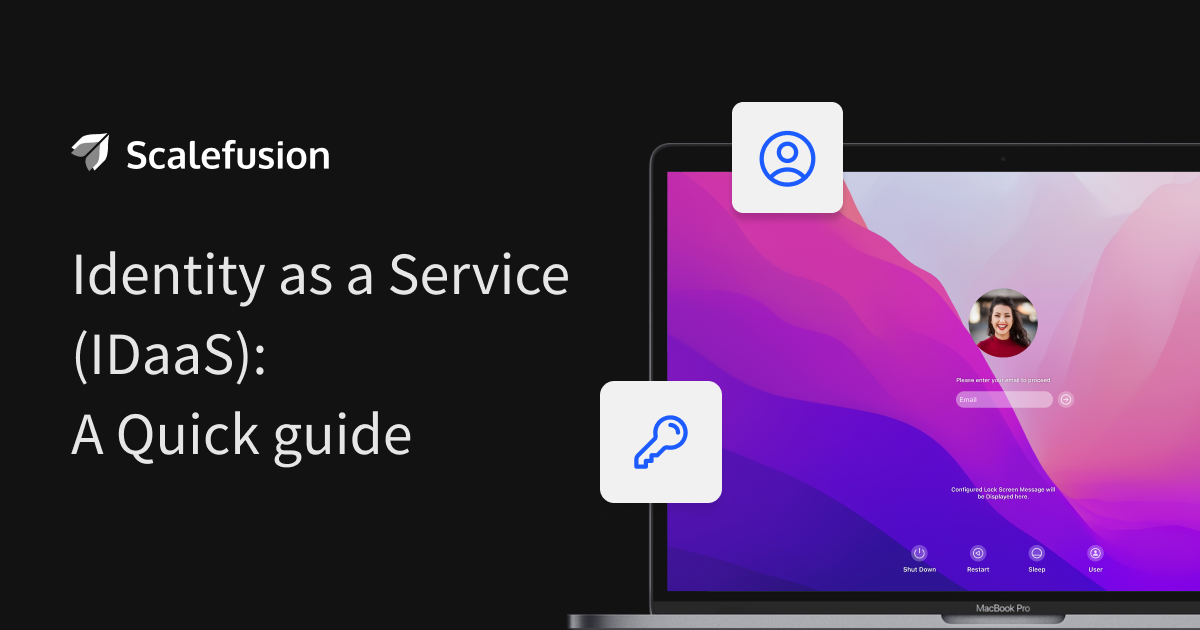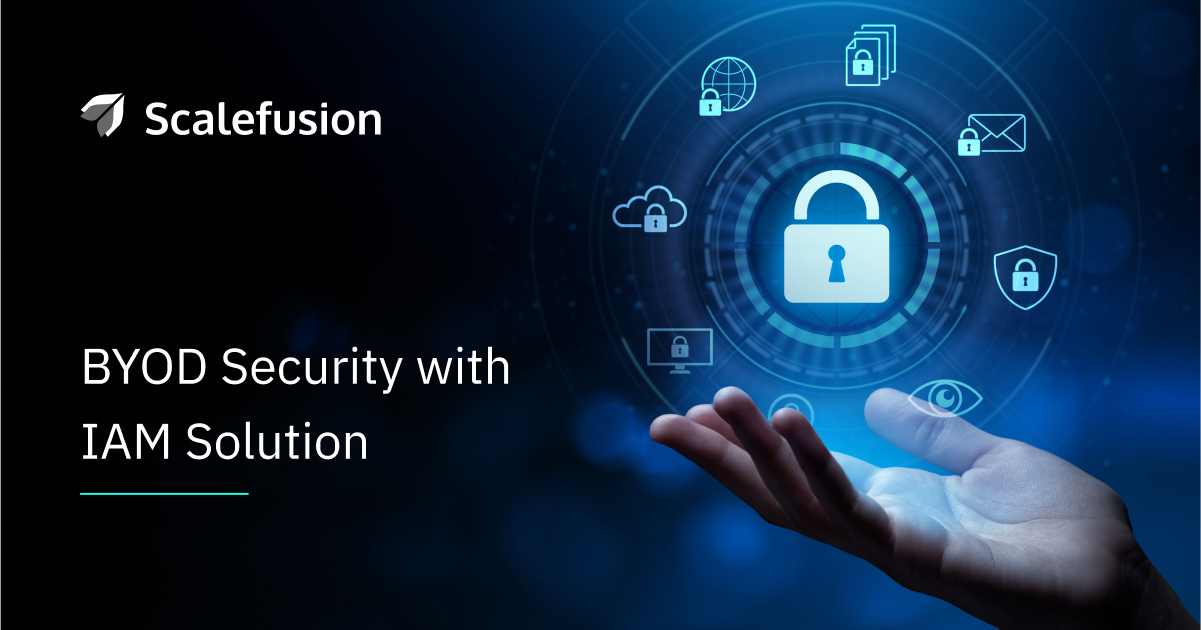While BYOD stands for ‘Bring Your Own Device’ it should never imply ‘Bring Your Own Danger’. The freedom and flexibility offered by this approach also come with heightened security risks.
Where BYOD policies are becoming the norm, security risks are a growing concern for businesses. While BYOD offers flexibility and convenience, it also opens the door to potential threats. Devices may be lost, compromised, or used in unsecured networks. Here, two-factor authentication (2FA) comes in as a safeguard.
According to a report, 30% of internet users have experienced a data breach due to a weak password.[1] 2FA goes beyond the traditional password by requiring users to verify their identity through a second layer of protection, such as a code sent to their phone or a fingerprint scan. Even if a password falls into the wrong hands, this additional step makes it much harder for unauthorized users to access sensitive business data.
For businesses implementing BYOD, 2FA helps address the vulnerabilities associated with personal devices. It acts as a simple yet effective tool to minimize the risks of data breaches, phishing attacks, and unauthorized access, ensuring that only the right individuals can access company resources.
In this blog, we’ll learn about what is two-factor authentication, and how 2FA prevents BYOD risks.
Understanding BYOD Risks
When businesses allow employees to use personal devices for work, they face several security challenges that can compromise sensitive data and systems. To effectively manage these risks, implementing a comprehensive BYOD policy is important.
Below are some of the key risks associated with BYOD:
1. Data Breaches
When employees use their personal devices for work, they may not have the same level of security as company-managed devices. This makes it easier for sensitive data to be exposed or accessed by unauthorized parties, leading to potential data breaches.
2. Unauthorized Access
Personal devices often aren’t as tightly monitored as company equipment. Employees might share their devices with family or friends, or leave them unattended, increasing the chances of unauthorized individuals gaining access to company data.
3. Phishing Attacks
Outside of secure work environments, employees using their own devices may be more vulnerable to phishing attacks. A simple click on a malicious link or fake email could give hackers access to sensitive business information.
4. Weak Passwords
Employees may use weak or easily guessed passwords on their personal devices, which can lead to unauthorized access. Without strong password policies in place, the security of company data is significantly weakened.
5. Loss or Theft of Devices
Personal devices are more likely to be lost or stolen, especially since they are carried around outside of the workplace. If business data is stored on these devices, it could easily fall into the wrong hands, putting the company at risk.
6. Lack of Control Over Security Updates
Unlike company-issued devices, personal devices might not receive regular security updates. Without the latest protections in place, these devices are more prone to malware and other security vulnerabilities.
What is Two-Factor Authentication (2FA)?
Two-factor authentication (2FA) adds an extra layer of security to ensure that only authorized users can access an account or system. It requires users to provide two forms of identification before access is granted. Typically, the first factor is something the user knows/has, like a password or a biometric, and the second factor is something the user gets, such as a code sent to their phone or a verification link.
This additional step makes it significantly harder for hackers or unauthorized individuals to gain access, even if they have the password. 2FA is increasingly adopted by businesses as an effective method to protect sensitive information from being compromised.
To illustrate, consider withdrawing money from an ATM: you need both your card and your PIN to complete the transaction. This dual requirement provides more security than relying on just one factor alone. Similarly, 2FA combines two distinct forms of verification, making it much more difficult for unauthorized users to break into accounts.
How 2FA Enhances BYOD Security
Two-factor authentication (2FA) is a vital tool for enriching security in BYOD environments by adding an extra layer of protection to prevent unauthorized access. Below are the key ways 2FA strengthens BYOD security:
1. Prevents Unauthorized Access
Two-factor authentication (2FA) plays a crucial role in preventing unauthorized access in a BYOD environment by adding an additional security layer. Personal devices used in BYOD setups often lack enterprise-level security, making them more vulnerable to attacks. With 2FA, users need to provide both a password and a second form of verification, such as a one-time code generated by an authenticator app or sent via SMS to their personal phone. This ensures that even if someone gains access to an employee’s password, they still cannot access sensitive company data without the second authentication step, effectively reducing the risk of unauthorized access.
2. Mitigates Phishing Risks
Phishing attacks are a significant threat in BYOD environments, where personal devices are often used to access corporate systems without the same security controls as company-issued equipment. According to SlashNext’s 2023 Mobile BYOD Security Report, 71% of employees store sensitive work information on their personal devices, and phishing attacks have targeted 43%.[2] While corporate devices are typically protected by firewalls and advanced security software, personal devices may lack these defenses, making them more vulnerable to phishing threats.
Two-factor authentication (2FA) is a vital safeguard in this scenario, as it provides an additional layer of security. Even if an employee falls victim to a phishing attack and their password is compromised, 2FA requires a second verification step, such as a temporary code sent to their phone or a biometric scan. This prevents attackers from gaining access to sensitive company data, significantly reducing the risk of phishing-related breaches in a BYOD environment.
3. Reduces Risks of Device Loss or Theft
Personal devices used for work are more likely to be lost or stolen compared to company-managed devices. With 2FA, the risk associated with device loss or theft is minimized. Even if a device falls into the wrong hands, the second authentication factor is still required to access sensitive business information, keeping data secure despite the physical security breach.
4. Strengthens Protection for Weak Passwords
Employees using personal devices may not always adhere to strong password practices. 2FA provides an added layer of security, compensating for weaker passwords by requiring a second form of authentication. This ensures that access to company systems is still tightly controlled, even if passwords are not as robust as they should be.
5. Improves Security for Remote Access
BYOD often involves accessing company resources remotely, which can expose devices to unsecured networks and environments. 2FA improves security for remote access by requiring users to complete a second authentication step before logging in. This helps protect against potential threats from unsecured networks and ensures that only authorized users can access critical business systems.
Strengthen BYOD Security with Scalefusion OneIdP’s Multi-Factor Authentication
Securing personal devices in a BYOD environment requires a strong defense against unauthorized access. Scalefusion’s Multi-Factor Authentication (MFA) provides that defense by adding an extra layer of protection for user accounts, apps, corporate data, and devices.
Scalefusion OneIdP’s MFA works by requiring two forms of verification before granting access. This usually means combining something you know, like a password, with something you have, such as a smartphone or a security token. By using MFA, you greatly reduce the risk of unauthorized access and ensure that only verified users can get to your sensitive information.
The login process is simplified for added security. After users enter their login ID and password, they must complete a second step using a One-Time Password (OTP). This ensures that access is granted only to authorized individuals, protecting both device access and application permissions.
Implementing MFA is about building a culture of security within your organization. As security threats evolve, so should your security measures. Scalefusion OneIdP offers robust MFA capabilities to help you manage and secure your devices and endpoints effectively.
Discover a higher level of security with Scalefusion OneIdP. To know more, contact our experts and book a demo today!
Reference:
2. PR Newswire



